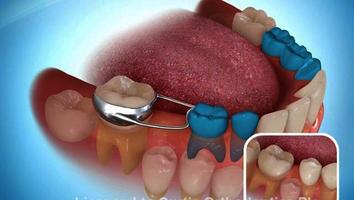A space maintainer is an appliance like other dental appliances such as braces, headgear and many others. It has its own purpose, always custom made by a dentist or orthodontic. The material used in its preparation is acrylic or metal .It can be of both types i.e. either removable or cemented in a child’s mouth. The main purpose is to keep the space open to allow the permanent tooth to erupt and come into place.
Have you ever think that why baby teeth are there and what kind of role they play for future teeth? Baby teeth are very important to the development of the teeth, jaw bones and muscles. Baby teeth are basically there to guide permanent teeth into position when the baby teeth are lost. At that time, If a space is not maintained, then teeth can shift into the open space and orthodontic treatment may be required. Children may need space maintainers if they lose a tooth early or have a baby tooth extracted due to dental decay.
It is also important to know that not every child who loses a baby tooth early or to dental decay requires a space maintainer. Only a professional consultation with your dentist or orthodontist can help to determine if using a space maintainer is needed. In today’s world of dentistry, there are numerous types of space maintainers available. The range of space maintainers are from the very simple to those with numerous bands and wires. They can be constructed differently and used in different parts of the mouth.

Types of Space Maintainers
Space maintainers can be broadly classified into four categories. They can be fixed or removable, and they can be unilateral or bilateral.
- A removable space maintainer, as its name indicates , can be removed. While a fixed space maintainer is fixed.
- Fixation usually is done by cementing the space maintenance appliance in place. Fixed space maintainers can be unilateral or bilateral.
- Unilateral space maintainers are fixed to one side of the mouth and bilateral space maintainers are fixed to both sides of the mouth.
- Space maintainers also can be placed on the mandibular or maxillary arch. Mandibular fixed bilateral space appliances generally are preferred by clinicians over removable space maintainers. Fixed appliances are easier to maintain and they are less likely to be removed, damaged, or lost by the child.
- There could be numerous variations on these basic themes like for instance, some space maintainers are used for missing anterior teeth and some are used to preserve space for posterior unerupted teeth. Below you can find all different types of space maintainer.
Fixed unilateral space maintainer
Fixed unilateral appliance is a variation on the band and loop space maintainer. In this type, the stainless steel wire is soldered to the stainless steel crown and the wire is usually bent in this way so that it is adapted closely to the tissue. The crown and loop space maintainer is a type of fixed unilateral space maintainer where stainless steel crown therapy was necessary on the abutment tooth.
Fixed Bilateral space maintainer
In this case, a fixed unilateral band and loop space maintainer is used on one side and a fixed unilateral crown and loop space maintainer is used on the other side. Crown and loop space maintainers can be used when a stainless steel crown is needed on a tooth which also is an abutment for a space maintainer.
In this type, the appliance is attached to permanent teeth. The mandibular lingual arch space maintainer is used in the primary dentition and the mixed dentition, where bands can be cemented to primary or permanent molars respectively. This is one of the most ubiquitously used space maintainers. It is even used on occasion in the permanent dentition when bicuspids are missing and maintaining space is necessary prior to orthodontic therapy.
Mandibular Removable Bilateral Space Maintainer
This type is usually used when a child has prematurely lost the mandibular right and left first and second primary molars. The disadvantages of a removable appliance are that it may not be worn by the patient especially when patient is child. In addition to this, it is more susceptible to breakage or loss by the patient. Most clinicians prefer to place fixed space maintainers if possible.
Bilateral Band And Loop Space Maintenance
This type involves two band and loop space maintainers, an example of the bilateral use of fixed unilateral band and loop space maintainers. These are very common types of unilateral space maintainers, and they often are used bilaterally.
Maxillary Removable Bilateral Space Maintenar
It is a removable appliance, and as discussed above that removable appliances are not commonly used because of problems with the appliance not being worn and the frequent incidence of breakage and loss. This type of space maintainer also is known as a Nance Holding Arch or a Nance Appliance.
In this type, there is usually a small acrylic button which will rest against the palatal tissue with this appliance. Some clinicians object to the button since it can create tissue irritation. Therefore, it’s important that patients and parents be instructed properly to make sure that the patient meticulously flosses under the acrylic button. The Nance Holding Arch is used in situations where premature bilateral loss of maxillary primary teeth has occurred.
Distalpe Shoe Space Maintenance
This appliance is called used to prevent first permanent molars from moving mesially with the premature loss of second primary molars. A crown with a distal extension segment soldered to the crown. The distal segment is extended into the tissue against the unerupted first permanent molar. The distal extension, also called a distal shoe, is used when the second primary molars are lost prior to the eruption of the first permanent molars.


